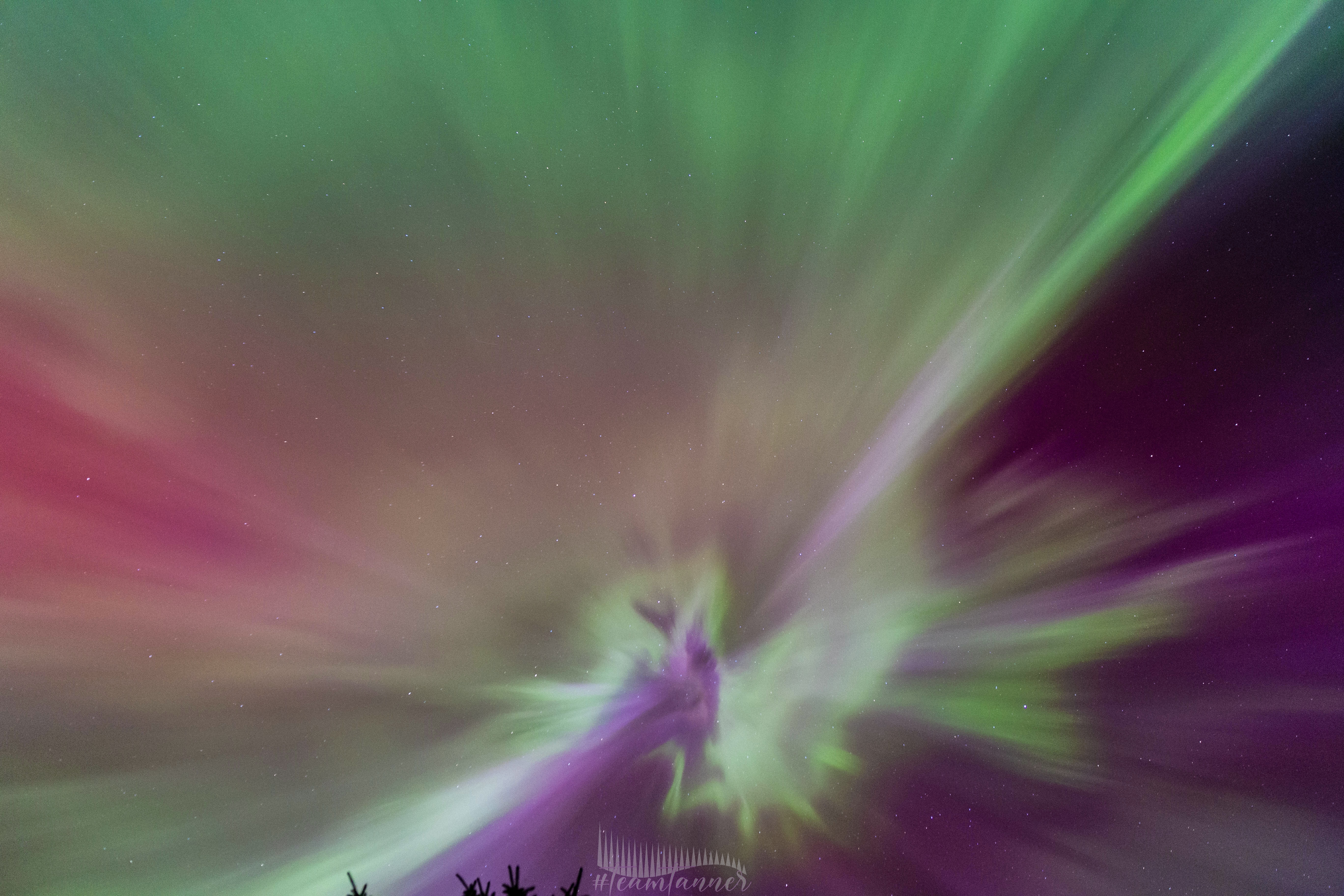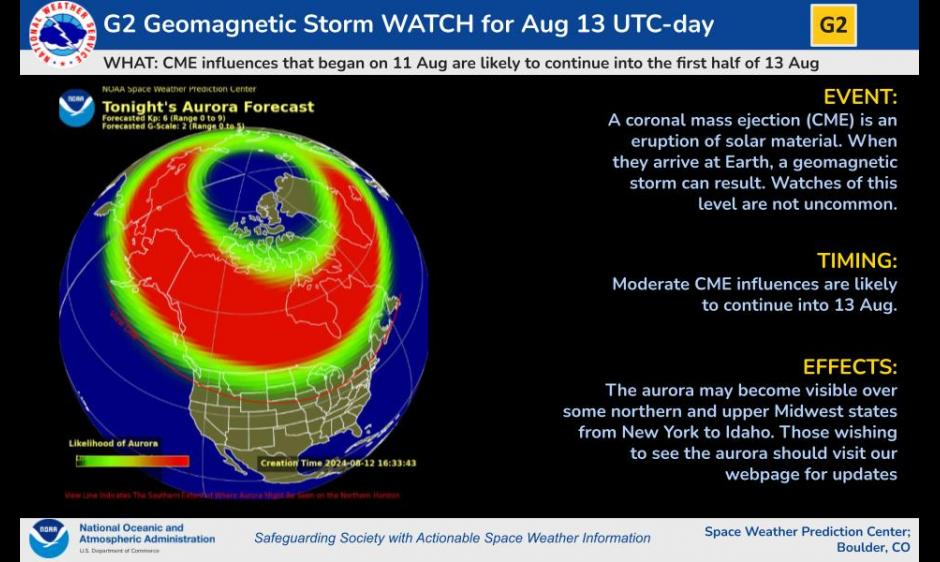
The sun's stormy weather is supercharging auroras on Earth this week, due to a series of intense geomagnetic storms triggered by recent solar flares.
On Monday (Aug. 12), the U.S. National Oceanic and Atmospheric Administration's (NOAA) Space Weather Prediction Center (SWPC) detected a severe G4-class geomagnetic storm over Earth at 11 a.m. EDT (1500 GMT) that surely would have amplified northern lights displays across the United States if it had not occurred in the middle of the day.
"A severe geomagnetic storm includes the potential for aurora to be seen faintly as far south as Alabama and Northern California," SWPC officials said in a statement.
By Monday afternoon, geomagnetic storm conditions had weakened to a "moderate" G2-class storm, NOAA reported, which could make the northern lights visible from regions as far south as the upper United States, including Washington, Idaho, Montana, North Dakota and Wisconsin. It is expected to continue through at least Tuesday evening (Aug. 13), NOAA officials wrote in an update.
If a G2-class storm sounds a bit meh after the brief G4-class storm earlier on Monday, consider that an even weaker G1-class storm sparked dazzling auroras across the U.S. and Canada in late July.
Related: Perseid meteor shower and northern lights excite stargazers worldwide

The geomagnetic storms were triggered by solar particles expelled by the sun during a series of explosive coronal mass ejections that accompanied no less than five solar flares since Aug. 10. When they reach Earth, those charged solar particles are funneled over the poles by the planet's magnetic field, where they interact with the atmosphere to create glowing auroras.
In the Northern Hemisphere, this light show is called the aurora borealis, or northern lights. In the Southern Hemisphere, it's known as the aurora australis, or southern lights.
A chance of amplified northern lights is not the only amazing sight stargazers can see in the night sky this week. The annual Perseid meteor shower is peaking overnight on Aug. 11 and Aug. 12, bringing with it the potential to see auroras and meteors on the same night for some lucky stargazers. If you're hoping to snap a photo of the northern lights, check out our guide on where and how to photograph auroras.
Editor's note: If you capture a stunning photo or video of the northern lights (or southern lights!) and want to share them with Space.com for a possible story, send images, comments on the view and your location, as well as use permissions to spacephotos@space.com.







